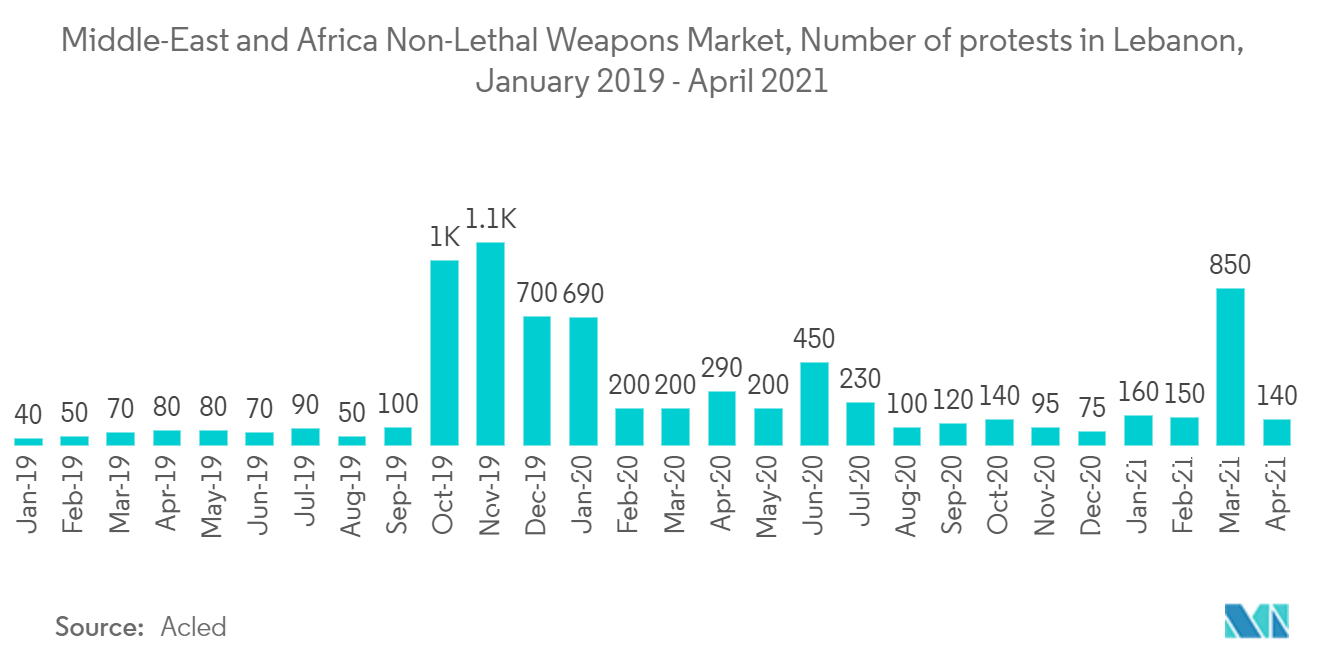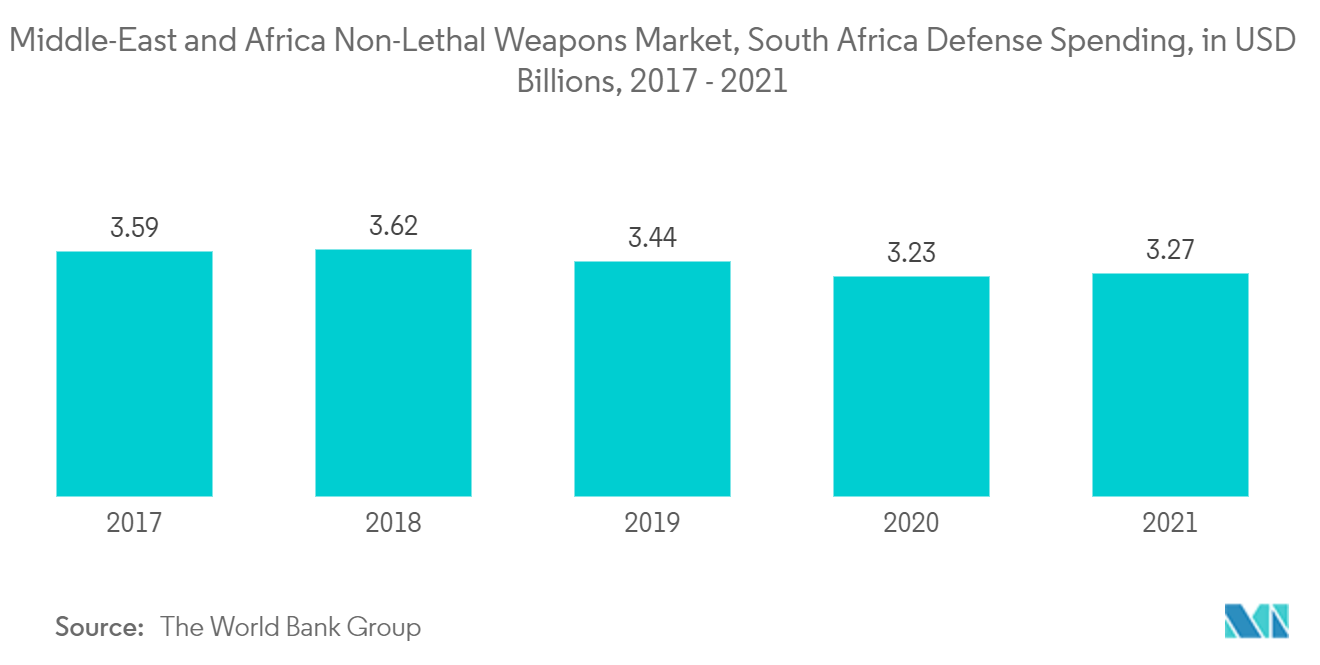Market Trends of Middle-East and Africa Non-lethal Weapons Industry
Law Enforcement Segment to Dominate Market Share During the Forecast Period
- Law enforcement agencies include special, local, state police, federal agencies, or drug enforcement administration that use non-lethal or less-lethal weapons to avoid injury to officers in close contact situations.
- In the past few years, violent attacks on law enforcement agents have increased in the Middle East and Africa, thereby prompting law enforcement agencies to provide their agents with non-lethal weapons, such as police batons, expandable batons, tasers, and other electronic stun devices and chemical agents, such as OC and CS, to protect themselves and others from threats possessed by violent suspects.
- Furthermore, civilian unrest in countries like Lebanon, Zimbabwe, Egypt, South Africa, Kenya, etc., is on the rise, forcing law enforcement agencies to increase the procurement of non-lethal weapons to control violent crowds efficiently. There have been grants by the governments for the use of advanced non-lethal weapons in case of emergencies.
- For instance, in 2022, the Inspector General of Nigerian Police announced the distribution of advanced non-lethal weapons for the police forces ahead of the 2023 general elections. The non-lethal weapons include long and short-range tear gas for civil disorder management and stun guns, thereby enabling law enforcement agencies to handle the crowd during moments of crisis. Such procurements by the local law enforcement agencies and police for riot prevention or crowd dispersal are anticipated to drive the market during the forecast period.

South Africa to Witness Significant Growth During The Forecast Period
- South Africa has one of the highest rates of public protests in the world, and there has been an increase in the number of protests in the country since 2008. The country is widely dubbed as the been dubbed protest capital of the world due to the instances of protests against the government's urban land and housing policies, Unequal and segregated distribution of land in both rural and urban areas, poor service delivery, governmental corruption, rampant crime, and unemployment amongst others.
- According to the SAHRC Community Protest Pamphlet, it is estimated that South Africa has more than 13 500 protests every year, of which the vast majority are non-violent. Moreover, according to the data released by the Institute for security studies, there has been an increase in the number of demonstrations and protests in South Africa during the lockdown, as the pandemic has exposed the socioeconomic weaknesses prevalent in the country due to poor policy implementation and a fundamental failure of political leadership.
- On this note, a total of 511 protests were recorded in the country during the COVID-19 lockdown. This led to an increase in the demand for non-lethal weapons, such as electric shock shields, rubber bullets, tear gas, stun guns, batons, as well as water cannons, by law enforcement agencies in South Africa.
- Moreover, in order to curb such protests, there has been an increase in terms of defense spending by the South African military for acquiring advanced non-lethal weapons such as high impact solid rounds, laser add-ons, and pepper rounds, amongst others. Thus, the increase in the number of riots in South Africa, coupled with increasing investments by South African defense personnel for acquiring new and advanced nonlethal weapons, will have a positive outlook on the market during the forecast period.


